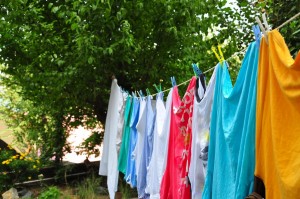If you know one thing about mold, you know that it likes moisture. In order for mold to begin to form a colony in your home, some source of moisture must be present. Unfortunately, it can be tough to avoid these conditions, especially in rooms like your bathroom. The key to mold prevention in your home is to dehumidify your home to the best of your abilities. In areas like ours where humidity is inescapable, how can you accomplish this?
Signs of Excessive Humidity
The normal range of humidity in a home is 30 percent to 50 percent humidity. When there is too much humidity in your home, chances are you’ll know it. Humidity is quite easy to feel. It’s sticky, sauna-like, and generally uncomfortable. If your home feels like this, you definitely have a humidity problem. There are some more subtle signs to notice as well. Pay attention to the allergies of yourself and your family members. This could be an indication that mold prevention has failed and colonies are starting to set in. Your doors and walls may also swell in humid conditions, and you may find that a must odor develops.
Why is Humidity a Problem?
As we discussed before, humidity is an essential element for mold growth. That means that de-humidifying your home is essential to mold prevention. If you don’t catch it soon enough, water damage and mold damage can set in. Mold is particularly tough to deal with, as it can lead to unpleasant health effects that can plague your more sensitive family members and even your pets.
How to Dehumidify your Home?
Ventilation: Whether you have a good ventilation system that you never use, or you need to add to your existing system, ventilation is a great way to reduce humidity in your home. With the increased air flow, humidity will decrease.
Fans and AC: Fans help move air around, and as this occurs, evaporation is encouraged. Instead of letting air sit stagnate, everything will keep moving. An air conditioner can have a similar effect, and can even pull the moisture right out of the air if you set it to dry.
Shower Habits: Every time you shower, moisture enters the air and adds to the humidity in your home. Showers are necessary, but by taking shorter showers with an open window and a ventilation fan on, you can greatly reduce the humidity in your home.
Avoid Dryers: When you add warm air to wet clothes, you have a recipe for humidity. Even driers that vent to the outdoors can create humidity in your home. On nice days, consider drying your clothing on a line in your back yard. The process may be slower, but it’ll help reduce the humidity in your home.
Contact Environmental Consulting and Contracting Group
If your mold prevention plans failed and you suspect that mold is an issue, contact the professionals at Environmental Consulting and Contracting Group. With more than 30 years in the mold remediation industry, we have the experience and tools to help you. Contact us at 410-258-3579 or 1-877-591-MOLD (6653). Be sure to follow us on Facebook, Twitter, and Pinterest!
Tags: mold prevention, Remediation


